Molley Green Reserve: ‘a place we call home’ reopens
23 May 2025
It’ll help enable up to 1,200 new homes in Auckland’s Roskill Development and is “hugely important” to the community that’s already here. Join Leah and Tessa for a tour of the newly-reopened Molley Green Reserve.
From the moment construction fences were removed, people were already shooting hoops on the new basketball courts.
Then, within minutes after the final school bell rang, hundreds of tamariki were back at the place a community calls home.
And why wouldn’t they be? After patiently waiting for just over a year, Roskill residents were keen to explore a space where they’d previously always come together.
On 23 May, Molley Green Reserve officially reopened after receiving final engineering approvals. But an excited Waikōwhai community was able to celebrate much sooner – efforts to open new basketball courts, bathrooms, a learn-to-ride track and picnic area in time for summer meant more than 300 people could get together for December’s Picnic in the Park(external link).
Our Roskill Correspondents Leah and Tessa were on the scene:
Adding to the features of Leah and Tessa’s tour, the May milestone means more natural space has opened for the community.
Additional landscaping, Māori wayfinding and storytelling, and a new playground are all still to come, but people can now enjoy a closer connection to the daylighted awa with scenic boardwalks and viewing platforms.
A new “kick-around” greenspace has also opened, alongside the Albrecht Basin stormwater detention pond and upgraded Molley Green Place.
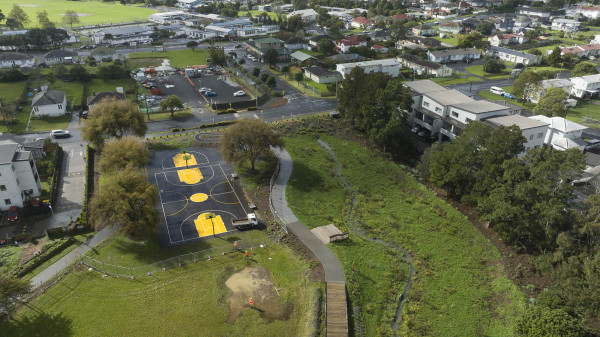
Most of these fences at Molley Green Reserve have been removed, providing closer access to the awa, walkways and greenspace.
So why is this space so important to the community?
“I think it’s a place we call home, it’s where everyone gathers around, it’s where everyone chills,” says Frederick, 18, a regular at the Salvation Army’s Friday Hangouts.
The weekly hangouts have been a staple in Waikōwhai for nearly two decades and, like many other local youth activities, share a connection with Molley Green Reserve.
“A lot of our youth work early on started off at this park,” says Salvation Army Youth Worker Jon Riki Williams.
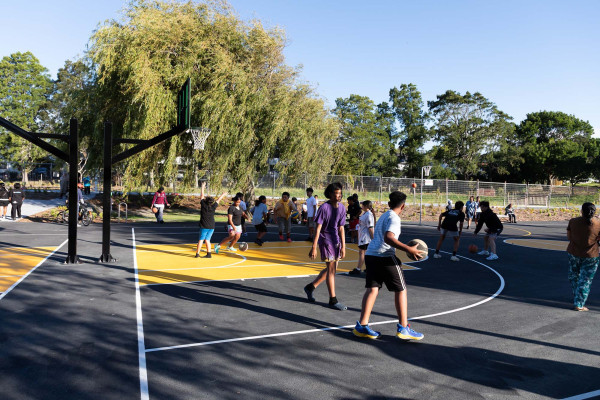
For years, Molley Green has been the “watering hole for all the young people” of Waikōwhai.
“I think it’s important to not only have a place for new residents to come … but to refurbish something that the old residents also know and are very familiar with – to have their park back,” he says.
But before then, for the year of its closure, something had to be done to provide alternative spaces for the community’s “watering hole for all the young people”.
JP Puleitu, Kāinga Ora Youth Placemaking Advisor, says it was groups like the Sallies – along with Aftermath, the Roskill South Hub and Tā Tātou Māra Kai – who “really supported us in the transition”.
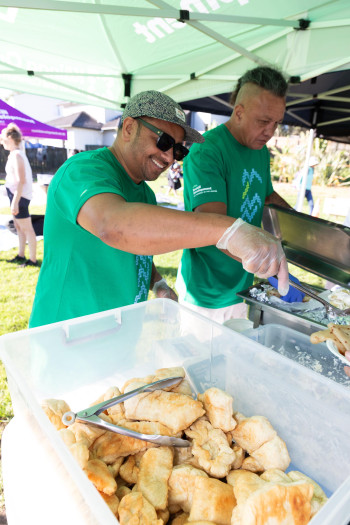
JP Puleitu, Kāinga Ora Youth Placemaking Advisor, with community champion Jacob.
Many already had regular activities and other spaces activated, but stepped up to accommodate an increased demand from the temporary closure.
“It’s such an anchor for the neighbourhood, as you can see – from the adults right to the young ones – this is their hub, this is their space, they’ve been missing it,” JP says.
“Now that it’s open, they’re back at it. It’s amazing.”
Now, JP and the team are planning a series of community activations to encourage the community to get back into “the vibe” they always enjoyed here.
But for Leah and Tessa, both 13, that vibe is already there.
“It’s important to me, and I think the whole community, because it’s a really nice spot where everybody in Roskill South meets up,” Leah says.
Tessa hopes the redeveloped space means more events, and a community where “we can all grow closer”.
“It’s just really nice to be with a family-whānau community.”
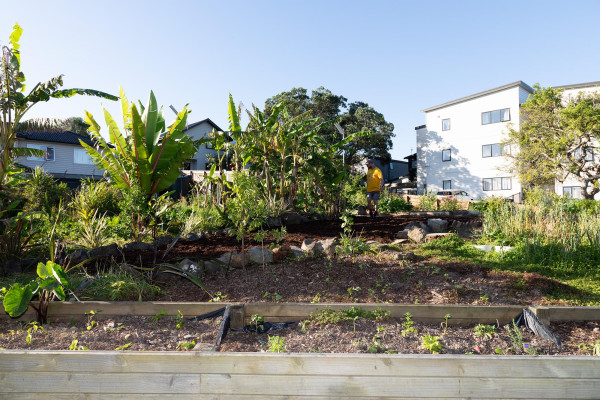
Tā Tātou Māra Kai remained open to the community during Molley Green Reserve’s upgrades.
‘Everyone’s garden’
While most of Molley Green was closed, an important part remained open for the community.
It’s a space filled with vegetables and fruit trees – apples, plums, banana and pineapple. Figs, peaches, pomegranates and inga edulis – better known as the “ice cream bean” – can also be found.
Its name is Tā Tātou Māra Kai(external link), which “roughly translates to ‘everyone’s garden’,” says Rowan Cant, coordinator for Friends of Molley Green Reserve.
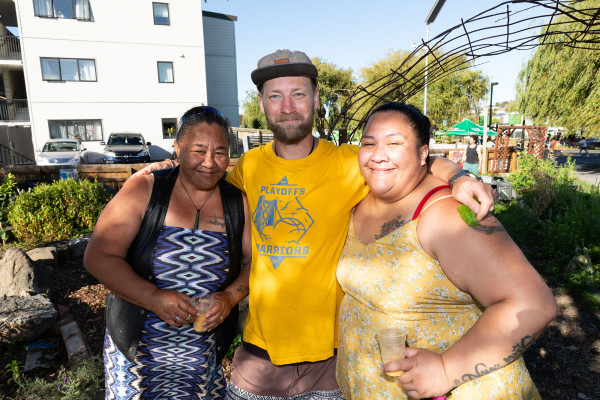
Rowan Cant, centre, is a fixture in the community and Friends of Molley Green Reserve member.
“The idea of this garden was that, in seeing the development … people wouldn’t be able to have the gardens they’d traditionally have in their backyards,” he says.
“We’ve tried to think about how we could help the neighbourhood to cultivate a space where they can grow healthy food and make it easier to get.”
Keeping the garden open while the rest of Molley Green Reserve had to close was a priority for the development team, even with the scale of work that would be completed around it.
“We’ve created a detention basin with the flood capacity to accommodate significant storm events,” says Andrey Polyakov, Infrastructure and Civil Construction Project Manager for Roskill Development.
“We’ve also installed about 200 metres of roading and planted about 26,000 plants.”
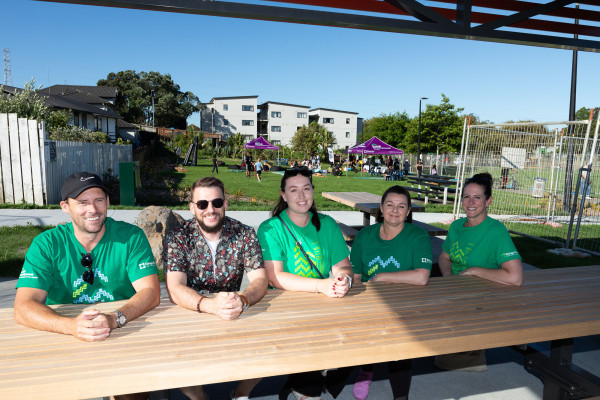
Andrey Polyakov, second from left, says it “warms my heart” to see the community flock back to the reserve.
Andrey says “it feels great” to see the park reopened after an extensive effort from teams across Kāinga Ora, LEAD Alliance, Healthy Waters and Watercare.
“Just over a year ago, we all gathered here for the blessing to open the civil works,” he says.
“Now where I’m standing, with all these kids playing on the basketball courts and learn-to-ride track, it just warms my heart.”
Mark Iszard, Manager Growth and Developments at Healthy Waters, says the Molley Green project was “a great partnership with Kāinga Ora”.
“It was a fully integrated project linked to outcomes for Auckland Transport and community facilities, delivering multiple outcomes seamlessly while minimising years’ worth of disruption to the community.”
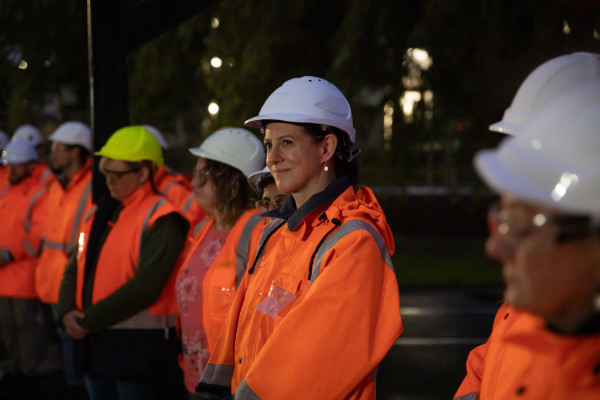
Senior Development Manager Lucy Smith, pictured at a blessing for Molley Green, says the reserve is “hugely important” to the Roskill community.
Lucy Smith, Senior Development Manager, says the upgrade has helped enable up to 1,200 new homes in Waikōwhai under Roskill Development.
“We hope very much that the community really embraces this space,” she says. “We know that Molley Green Reserve is hugely important to them.”
And for that reason, a project to enable new homes was also the perfect opportunity to provide the amenity that meant they continue to love living here.
“You can just see how quickly the kids have jumped back onto the basketball court,” Lucy says.
“Molley Green Reserve is the complete experience for the community.”
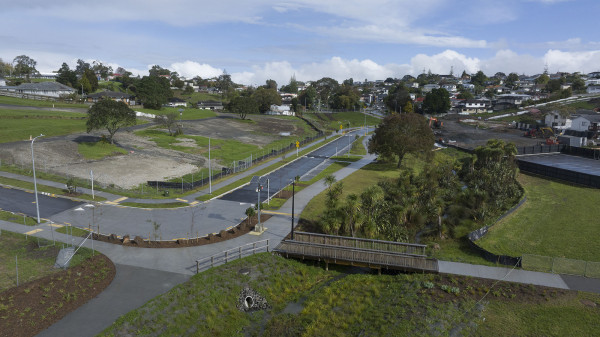
An upgraded road, new scenic boardwalks and a viewing platform were all included in the project.
Upgrades at a glance
- Half and full basketball courts
- New public bathrooms
- A netball court
- A learn-to-ride cycle track
- New boardwalks and viewing platforms
- 1,170 metres of new concrete footpaths
- A barbeque area
- Four new picnic tables
- ‘Daylighting’ of the stream
- 407 metres of new wastewater pipes
- Three new stormwater outlets
- 26,000 new plants and trees
- Seven new streetlights
- 395 metres of new roads
- 1,414 cubic metres of stormwater detention – enough to accommodate a 200-year rainfall event.
